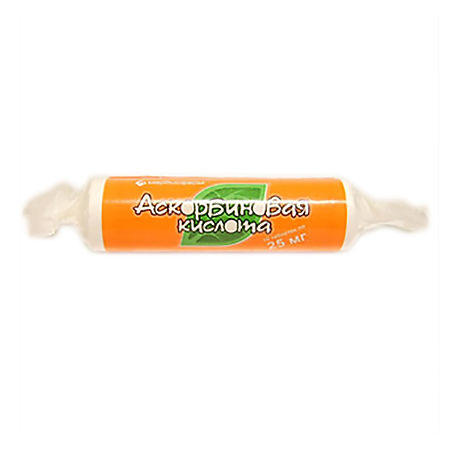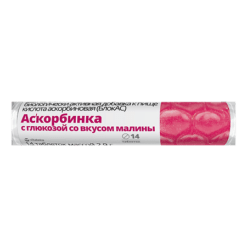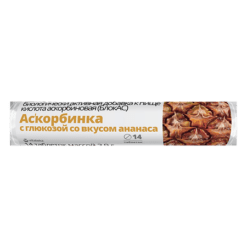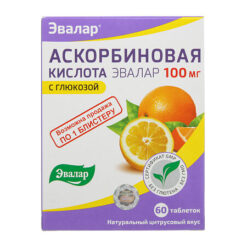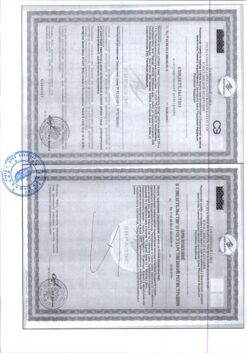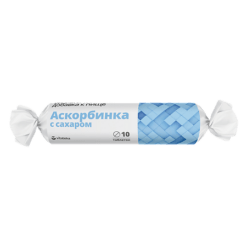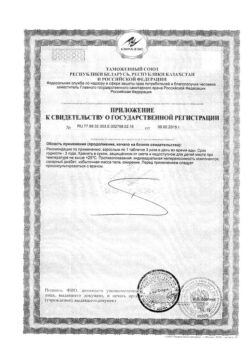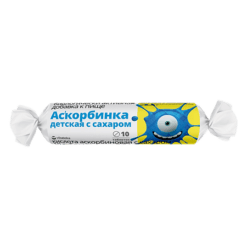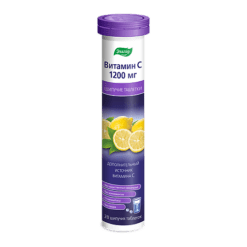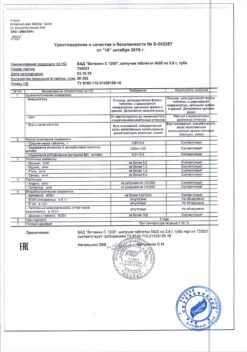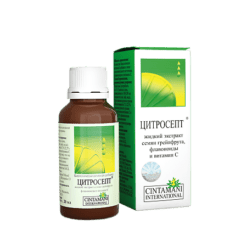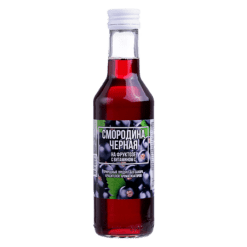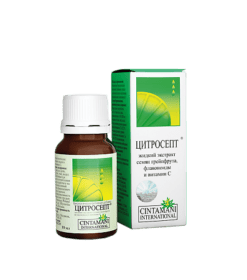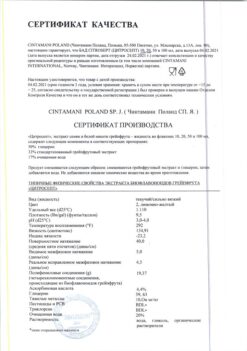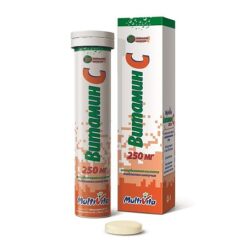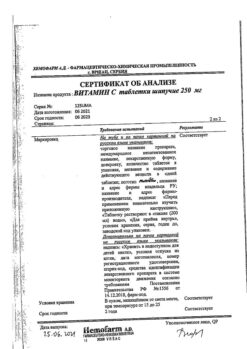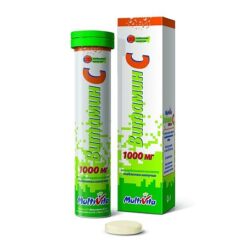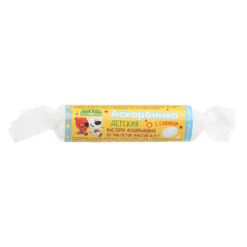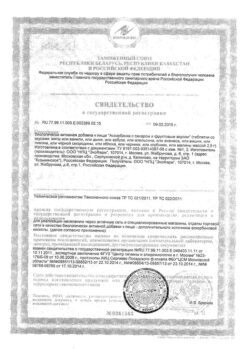No products in the cart.
Ascorbic acid twist, tablets 25 mg, 10 pcs.
€1.00
Out of stock
(E-mail when Stock is available)
Description
Pharmgroup:
vitamin.
Pharmic action:
Vitamin, has metabolic action.
Ascorbic acid is not formed in the human body, but comes only with food. It participates in the regulation of redox processes, carbohydrate metabolism, blood coagulation, tissue regeneration, increases resistance to infections, reduces vascular permeability, reduces the need for vitamins B1, B2, A, E, folic acid, pantothenic acid.
It has pronounced antioxidant properties.
It regulates the transport of hydrogen in many biochemical reactions, improves the use of glucose in the tricarboxylic acid cycle, is involved in the formation of tetrahydrofolic acid, stimulates tissue regeneration, synthesis of steroid hormones, collagen and procollagen.
Maintains colloidal state of intercellular substance and normal capillary permeability (inhibits hyaluronidase).
Activates proteolytic enzymes, participates in the metabolism of aromatic amino acids, pigments and cholesterol, promotes the accumulation of glycogen in the liver. Through the activation of respiratory enzymes in the liver it enhances its detoxifying and protein-forming functions and increases the synthesis of prothrombin.
It improves bile secretion, restores external secretory function of the pancreas and thyroid.
Regulates immunological reactions (activates the synthesis of antibodies, C3 component of the complement and interferon), promotes phagocytosis and increases resistance to infections.
Inhibits the release and accelerates degradation of histamine, inhibits the formation of Pg and other mediators of inflammation and allergic reactions.
.
Indications
Indications
Hypo- and avitaminosis C.
An increased need for ascorbic acid (period of intense growth, pregnancy, lactation, increased physical activity, period of recuperation).
How to take, the dosage
How to take, the dosage
Ingestion. Doses are given in terms of ascorbic acid.
Adults for prophylactic purposes – 50-100 mg/day, children – 25 mg/day.
Adults with therapeutic purpose – 50-100 3-5 times a day, children – 50-100 mg 2-3 times a day.
In pregnancy and lactation – 300 mg/day for 15 days, then 100 mg/day.
Interaction
Interaction
Ascorbic acid: increases the blood concentration of benzylpenicillin and tetracyclines; in a dose of 1 g / day increases the bioavailability of ethinylestradiol (including those included in oral contraceptives).
Improves intestinal absorption of Fe (converts trivalent iron to divalent iron); may increase iron excretion in concomitant use with deferoxamine.
Decreases the effectiveness of heparin and indirect anticoagulants.
ASA, oral contraceptives, fresh juices and alkaline drinking reduce absorption and absorption.
Concomitant use with ASA increases urinary excretion of ascorbic acid and decreases excretion of ASA.
ASA reduces absorption of ascorbic acid by about 30%.
It increases the risk of crystalluria when treated with salicylates and short-acting sulfonamides, slows renal excretion of acids, increases excretion of drugs with an alkaline reaction (including alkaloids), reduces the blood concentration of oral contraceptives.
Enhances total clearance of ethanol, which in turn reduces the concentration of ascorbic acid in the body.
Preventive agents of the quinoline series, CaCl2, salicylates, GCS deplete ascorbic acid reserves with long-term use.
With concomitant use it reduces the chronotropic effect of isoprenaline.
In long-term use or use in high doses may disrupt disulfiram-ethanol interaction.
In high doses increases renal excretion of mexiletine.
Barbiturates and primidone increase ascorbic acid excretion with urine.
Reduces therapeutic effects of antipsychotic drugs (neuroleptics) – phenothiazine derivatives, tubal reabsorption of amphetamine and tricyclic antidepressants.
Special Instructions
Special Instructions
Due to the stimulating effect of ascorbic acid on the synthesis of corticosteroid hormones it is necessary to monitor renal function and BP.
Long-term use of high doses may suppress pancreatic insular function, so it should be regularly monitored during treatment.
In patients with elevated iron levels in the body, ascorbic acid should be used in minimal doses.
Prescribing ascorbic acid to patients with rapidly proliferating and intensely metastatic tumors may worsen the process.
Ascorbic acid as a reducing agent can distort the results of various laboratory tests (blood glucose, bilirubin, activity of “liver” transaminases and LDH).
Contraindications
Contraindications
Hypersensitivity, children (under 3 years).
With caution. Diabetes mellitus, glucose-6-phosphate dehydrogenase deficiency; for use in high doses – hemochromatosis, sideroblast anemia, thalassemia, hyperoxaluria, nephrourolithiasis.
Overdose
Overdose
Symptoms: with prolonged use of large doses (more than 1 g) – headache, increased CNS excitability, insomnia, nausea, vomiting, diarrhea, hyperacidic gastritis, ulceration of the mucosa of the gastrointestinal tract, suppression of pancreatic insular apparatus function (hyperglycemia, glucosuria), hyperoxaluria, nephrolithiasis (from calcium oxalate), damage to the glomerular apparatus of the kidneys, moderate pollakiuria (when dosing more than 600 mg/day).
Decrease capillary permeability (possible deterioration of tissue trophism, increased BP, hypercoagulation, development of microangiopathies.
Additional information
| Conditions of storage | In a place protected from light at a temperature no higher than 15 ° C |
|---|---|
| Manufacturer | Marbiopharm, Russia |
| Medication form | pills |
| Brand | Marbiopharm |
Other forms…
Related products
Buy Ascorbic acid twist, tablets 25 mg, 10 pcs. with delivery to USA, UK, Europe and over 120 other countries.

